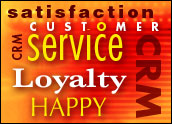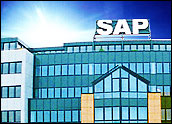
In creating a supply chain that serves a company’s specific needs, it may seem as if hundreds of details must be examined to formulate an effective strategy. But in looking at nuances like transportation costs or the price of warehousing software, companies may be missing the big picture.
There is no secret sauce for creating killer logistics, no magic bullet that can turn a clumsy operation into a sleek one, but there are steps that can help shape overall strategy and streamline an operation. Some of them do not even require much of an investment.
Here are some dos and don’ts for buffing logistics to a high shine.
DO: Take a Holistic View
Sometimes the most effective approach in supply chain management is also the most obvious. However, Thomas Phelps, a consultant with supply-chain advisory firm Alloquor Consulting, told CRM Buyer that he has seen many companies that seem to eschew common sense when it comes to logistics.
In particular, companies tend to rely on either technology or processes and do not understand that balancing both is the most beneficial tactic.
“Some of the companies that have the most successful supply chains haven’t invested that much in technology at all,” Phelps said. “They just know how to use what they’ve bought.”
He also noted that many companies either make a heavy investment in supply chain technology or skimp on buying applications while attempting to get by on elaborate processes. The particular direction employed usually can be traced back to whomever is responsible for running the logistics. If the executive in charge is technologically savvy, for example, that trait often will be reflected in the company’s focus.
To correct imbalances, Phelps said more investment is required in whichever side seems lacking. Although this may be an obvious strategy, it is a crucial one.
“If your warehouse is still trying to run on Excel spreadsheets, but they have detailed processes, it may be time to buy a warehouse management system,” he said. “On the other hand, if you have technology in place but something is wrong with the flow of goods, that technology won’t help you. Appropriate process will.”
DON’T: Play ‘Pass the Buck’
Another important step toward good logistics involves assigning responsibility. Phelps noted that because supply-chain operations are so complex, many individuals naturally will share responsibility for various aspects.
However, the involvement of a large number of people can spread responsibility so thinly that no one is answerable for specific components.
Phelps advised that there be clearly defined ownership roles for every aspect of a supply chain. If something goes wrong and someone has to answer for it, he said, it is more likely that problems will be prevented in the future.
“Let’s say that one person is responsible for transportation costs,” he said. “If that person has to go in front of the CEO when he’s screaming about those specific costs, he’s going to be more mindful of how he’s tracking those.”
DO: Ask for Samples
If new software is warranted, one secret to managing an investment effectively is to try it out before purchasing it.
Jeff Metersky, vice president of supply chain strategy at analytics firm Chainalytics, told CRM Buyer that he has seen a trend over the last year in which companies are asking to use applications before they buy them.
“Companies don’t want to make a major investment in something that might not work for them,” he said.
Some companies that spent a great deal of money on technology in the past came to realize they had taken on more than they could implement, Metersky explained. “There’s benefit to be gained with taking bite-sized chunks, and that’s what trying out software will do.”
DON’T: Watch Shelfware Collect Dust
Many companies that have proper processes and technological savvy may suffer from another common problem: underutilizing expensive software.
Scott Elliff, president of Capital Consulting & Management, told CRM Buyer that his company looked at the ROI on supply-chain IT and found that just 20 percent of companies claimed ROI.
“There’s a secret,” Elliff said. “Use what you have effectively. Don’t just have it and [not] use it.”
He noted that applications do not do much good if the people involved in the supply chain are not trained to use them.
“Computers are good at optimizing operations, but if you don’t know how to use it, they’re no good to you,” he said.
DON’T: Play the Individuality Card
One stumbling block that many companies encounter is the assumption that benchmark supply-chain data does not apply to them.
“Mindset is a major problem,” Elliff said. “I think companies believe they’re more unique than they really are. They also tend to think that they’re better competitively than they really are.”
These perceptions can hobble supply-chain management, because they do not allow companies to learn from the experiences of others.
“You can learn a great deal by looking at what other companies do,” Elliff said. “If there’s one secret, that’s it — to find broad opportunities for improvement rather than thinking you’re unique.”




















































